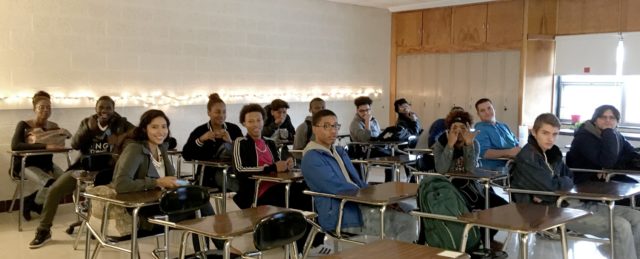The hype and reality of personalized learning
K-12 education is spending billions of dollars on personalized learning. 97% of US school districts are investing in this hot educational trend. But what is “personalized learning”? Is this effort worthwhile?
A recent Education Week article, “The Case(s) Against Personalized Learning” by Benjamin Herold, includes interesting research findings slotted into a confusing narrative.
What is personalized learning?
Herold begins by describing personalized learning as a high-tech, well-funded push for schools to install computer-based lessons. This software supposedly monitors each student’s responses and “personalizes” subsequent lesson plans. He then goes on to outline arguments that:
- The hype for this agenda “outweighs the research”;
- This kind of personalized learning is “bad for teachers and students”; and
- “Critics are worried that ‘personalized learning’ is cover for an aggressive push by the tech industry to turn K-12 education into a giant data-mining enterprise.”
Given Herold’s initial framing, it’s unsurprising that the article is full of competing perspectives. Juicy journalism perhaps, but the result is that the various authorities quoted talk past each other. That’s because they have different preconceptions of what personalized learning is.
Two extremes
Much of this confusion can eliminated if we think of personalized learning as a spectrum, with two extremes defined by Dan Buckley:
…”the T-route, in which the educational route the learner takes is controlled, decided and evaluated ultimately by the Teacher, and P-route in which the route that the learner takes is controlled, decided and evaluated by Peers (or Pupils if you prefer).”
—The PbyP Approach, Dan Buckley
For example from the article, the author of Schooling Beyond Measure, Alfie Kohn’s view is a dismissal of the T-route:
“…much of what’s marketed as ‘personalized learning’ amounts to little more than breaking knowledge and ideas down into itty-bitty parts, then using extrinsic rewards to march kids through a series of decontextualized skills they had no meaningful role in choosing.”
While Diane Tavenner, the CEO of California’s Summit Public Schools charter network, says:
“…the strongest personalized-learning models offer the best of what both conservatives and progressives want: high-quality standards and content for students, with opportunities to apply that knowledge via self-directed projects, all supplemented by human mentors and technology tools that help students keep track of their own learning.”
is claiming that Summit’s technology platform and instructional model, developed with support from Facebook and the Chan Zuckerberg Initiative, represents a successful mixture of the T- and P- routes.
Adult learning
This brings us to my interest in this topic as a student and facilitator of adult learning. (Which the article doesn’t mention. To be fair, Education Week confines itself to K-12 education — though you wouldn’t guess that from its name.)
The energetic disagreements documented by Herold are fueled by society’s three mutually incompatible ideas about children’s education (i.e., making good citizens, mastering certain bodies of knowledge, and fulfilling each student’s unique potential), as Kieran Egan lays out in his thought-provoking book The Educated Mind. These societal goals, however imperfectly attained, imply the need for a mixture of T- and P-route learning strategies. This is because teachers will always be needed to facilitate the understanding of ideas that have taken centuries for the human race to discover and which society insists are important for young minds to grasp.
For adults, on the other hand, I’d argue that the P-route is by far the dominant successful learning paradigm. We live in a world where the job you’ll have ten years from now probably doesn’t exist yet. (That’s the story of my life since I was in my 20’s.) Self-directed, active, peer-supported, just-in-time learning is now the default mode for most professionals. Every adult learner and meeting attendee needs to create their own environment and structure for life-long personalized learning if they are to be optimally effective in the world of work.
Arguments about how we should educate children will likely (and should) never end. But the case for P-route personalized learning in the adult world of work has never been stronger. And until the normal meeting process reflects this reality, our meetings will be pale shadows of what they could be.
Image attribution: edusurge


